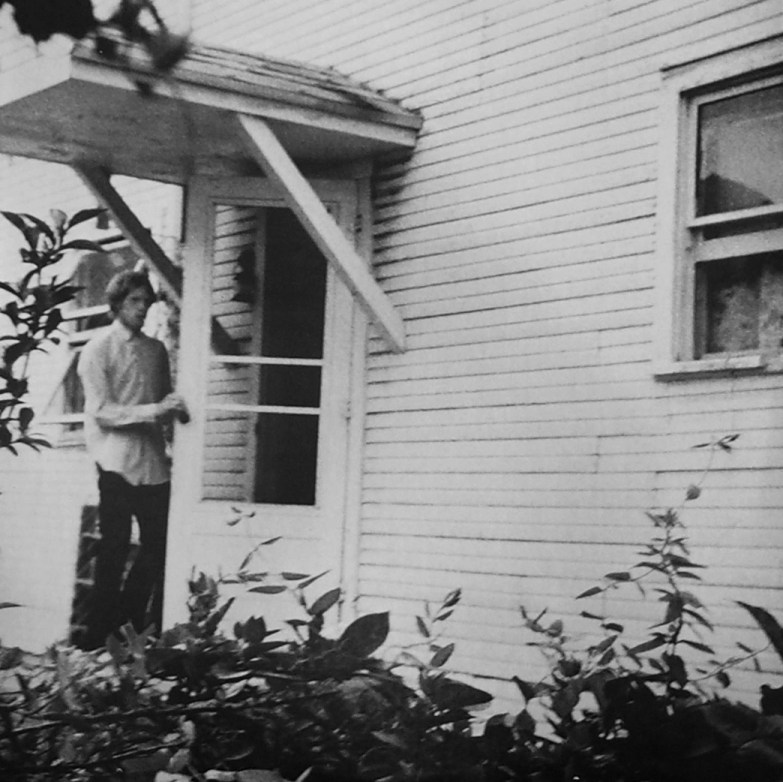Foreign Keys is the predecessor to Telegraph Melts, the first to feature this particular style from Jandek (no wave-esque noise rock with a full band), and it’s almost as good. Perhaps the main difference between the two albums is that Foreign Keys has more actual songlike structures instead of strange abstraction and it’s not as disturbing. For some reason I was so underwhelmed with this on my first listen that I didn’t even write a proper review, but as I revisited this while I was going through the meandering 90s and 00s Jandek albums, I realized there is actually a lot of fire stuff here.
The first half of the album isn’t that memorable, though. It features Jandek singing on top of chaotic noisy rock instrumentals. The style is closer to The Rocks Crumble here. His vocal delivery is kind of humorous and sassy or maybe aggressive at times (the repetition of the title on “Lost Cause” is kind of iconic) but otherwise it’s really just The Rocks Crumble, part 2 because of the awkward instrumentation and repetitive style.
The second half is where things really get good. The first return of Nancy! And oh my goodness, what a return. “Needs No Sun” is one of the catchiest and grooviest songs I’ve ever heard from Jandek. Her vocals are so much more powerful than what I remember from “Nancy Sings”. I like the off-key variations of the basic melody that they do on the vocals, guitar, and bass to convey a sort of dark wrongness. The grooviness of the song also hides a very sophisticated poem written in couplets. I can’t quite summarize what’s happening here, but I’m impressed that such a rocking song can disguise lyrics like “A bird flies home to you today / He needs no sun to see the way / He did his best in years untold / Living in the dying cold / Fell into a hole so deep / Lay down there his soul to keep”. Nancy’s singing is really good on the following tracks too, especially “Some of Your Peace” with the “PEEEEACE!!!” part. Love the instrumental on that one too.
“Ballad of Robert” is the first prototype for the disturbance from Telegraph Melts where we first hear the scary male singer on the album tell a “horror story” about a man named Robert who suffers from mental issues who lives at the halfway house. He uses his deep droning voice throughout the song, and escalates to full-on-screaming toward the end, and it freaks me out.
The final song, “River to Madrid”, is the main thing I love about this album. Really. It’s probably one of my top 10 Jandek songs in general and I’m always returning to it. It first caught my attention because it’s a proper duet between Nancy and the scary male vocalist (or maybe a different guy that only ever appears once? Hell if I know). They sing together a lot, which finally shows some aspect of rehearsal on these chaotic songs, and they actually harmonize with each other. Harmonies on a Jandek album? I can hardly believe it. The repetitions of “Well that’s the Spanish in me!” and other lines are actually catchy enough to get stuck in my head often. The instrumental is awkward and disjointed throughout as usual, but there are a few moments with the guitar and bass that really stand out and work with the melody of the vocals. What a legendary banger of a song.
While “Needs No Sun” and especially “River to Madrid” are some of Jandek’s finest songs, I almost never return to the rest of the album. It’s still decent, though, and it set the stage for the variety and higher artistic vision that would come on Telegraph Melts. When it comes to the early noise rock band Jandek albums, I would say Telegraph Melts > Foreign Keys > Modern Dances (and I don’t care much for the others).
7/10
Essential album?: Yes
Essential songs:
Needs No Sun*
Some of Your Peace
Ballad of Robert
River to Madrid*

